Rio Grande Valley is unusually quiet as Southwest border crossings drop to lowest point in at least 17 years

The number of illegal border crossings is down to the lowest it’s been in 17 years. (April 10, 2017) (Sign up for our free video newsletter here http://bit.ly/2n6VKPR)
- Share via
Reporting from Hidalgo, Texas — Slowly, the Border Patrol truck cut through the darkness, its headlights illuminating a deserted, sandy road framed by long grass and yellow mesquite trees.
“This area used to be really hot,” said Marlene Castro, a supervisory Border Patrol agent, as she scanned the path ahead for immigrants who had crossed the Rio Grande illegally into the United States. “You couldn’t move. Every time you turned a corner, you’d run into group after group.”
At 10 p.m. on a Friday night, this once-bustling crossing point – a stretch of wild brushland between the Rio Grande and the sprawling Texas border cities of Hidalgo and McAllen– is desolate. The only signs of life, apart from the odd wildcat stalking prey, are Border Patrol agents lurking by the roadside in pickup trucks and SUVs.
Across the Southwest border, the number of immigrants caught crossing illegally into the United States has dropped dramatically. Fewer than 12,200 people were apprehended in March, a 64% decrease from the same time last year, and the lowest monthly number in at least 17 years.
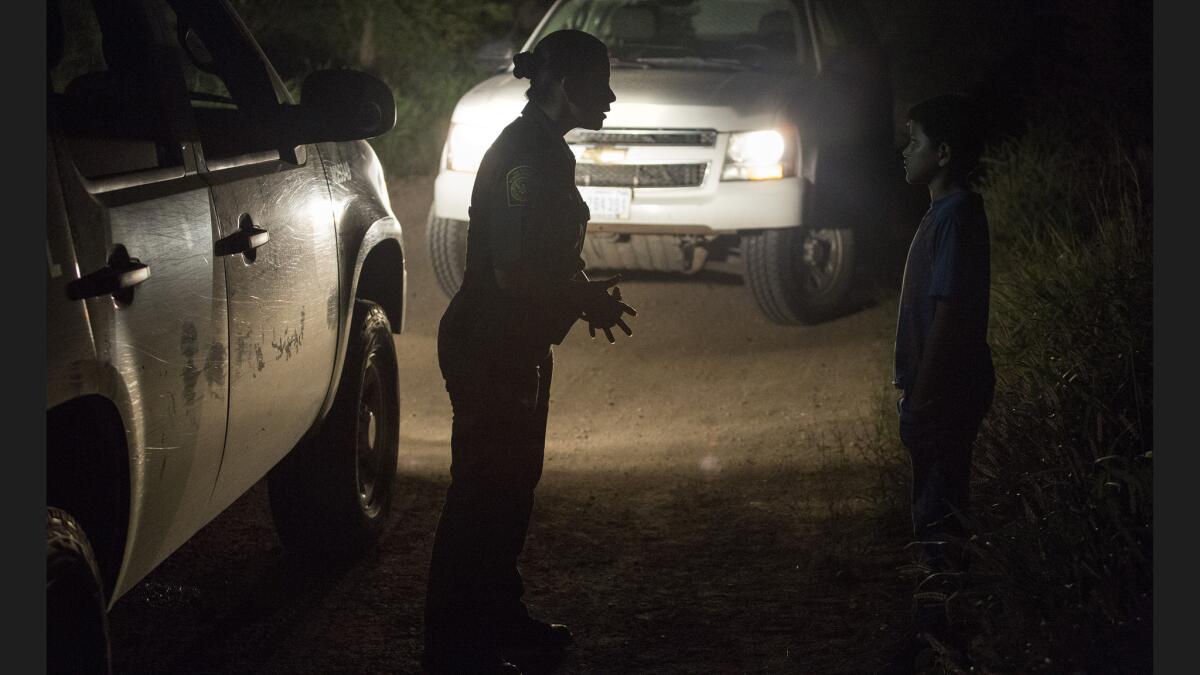
U.S. Border Patrol agent Marlene Castro, left, talks with an unaccompanied Honduran boy last month.
Here in the Rio Grande Valley, ground zero since 2014 for the flow of asylum seekers fleeing violence and persecution in Central America, the number of families and unaccompanied children caught entering the United States has plummeted, from about 291 a day in January to just 37 a day in March.
Migration experts, Border Patrol agents and advocates offer plenty of reasons for the sharp decline in people crossing over, from President Trump’s aggressive stance on securing the border and media coverage of recent immigration raids to heightened security on Mexico’s southern border. A rise in smuggling fees could also be a factor.
“We don’t really have a normal anymore,” said Castro, who has worked for Customs and Border Protection for nearly 20 years. She insists agents are not doing anything differently; the Trump administration’s executive orders are simply enforcing laws already on the books.
“Are you going to risk a 1,000-mile journey and pay $8,000 to be smuggled if you’re not sure you’ll get to stay?” Castro said, offering a reason she thinks fewer asylum seekers are crossing over. “I wouldn’t.”
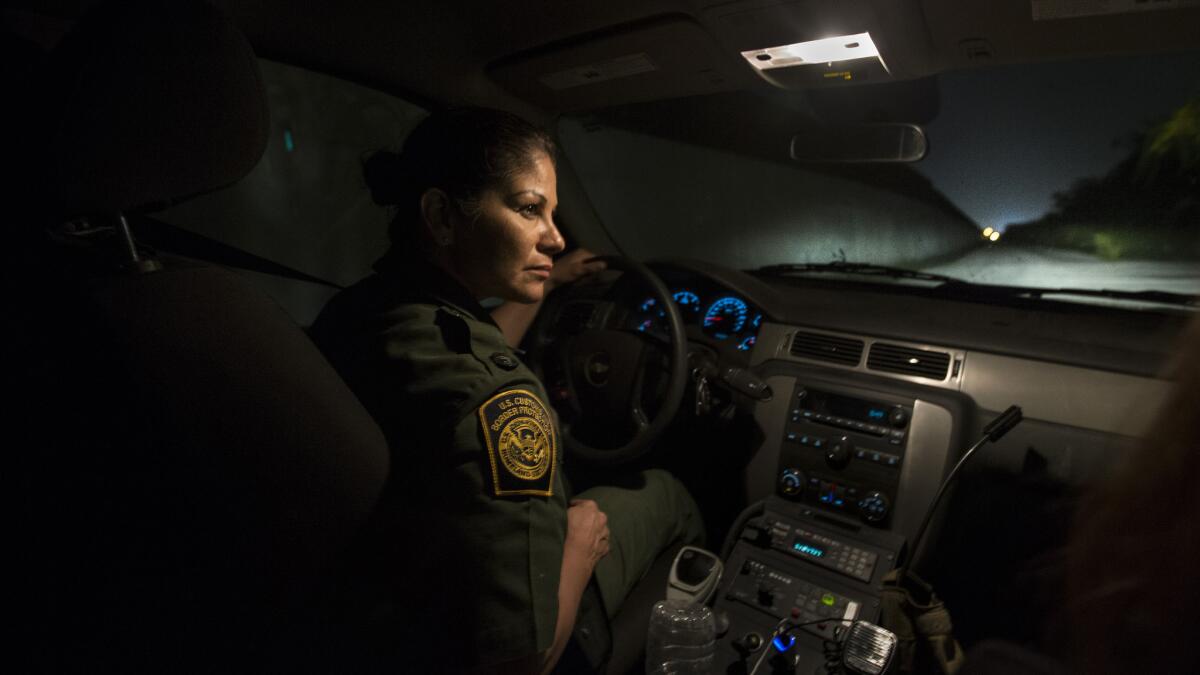
The Trump administration has been quick to take credit for the drop in apprehensions. On Wednesday, Homeland Security Secretary John Kelly testified to a Senate committee that the decline in immigrants caught crossing the border is “no accident,” acknowledging the “support of our leadership in the White House.” The White House, in turn, issued a statement, saying “the president’s commitment to securing our border and supporting law enforcement is already showing results.”
Yet while President Trump has delivered strong rhetoric, there have been few official changes in border enforcement. Amassing the funds to construct an expanded border wall is likely to take years, if it happens at all.
While Homeland Security officials were reported last month to be exploring a plan to separate adults and children caught illegally crossing the border, Kelly ruled that out Wednesday, telling a Senate committee he had ordered that mothers should not be separated from children unless a life was at risk.
Still, Trump’s strident stance on illegal immigration appears to have made some immigrants hesitant to make the journey.
“There’s a perception that it’s going to be very difficult for immigrants to cross into the U.S. and stay in the U.S.,” said Guadalupe Correa-Cabrera, an associate professor of public affairs and security studies at the University of Texas Rio Grande Valley. “It makes them think twice because the commitment is too big.”
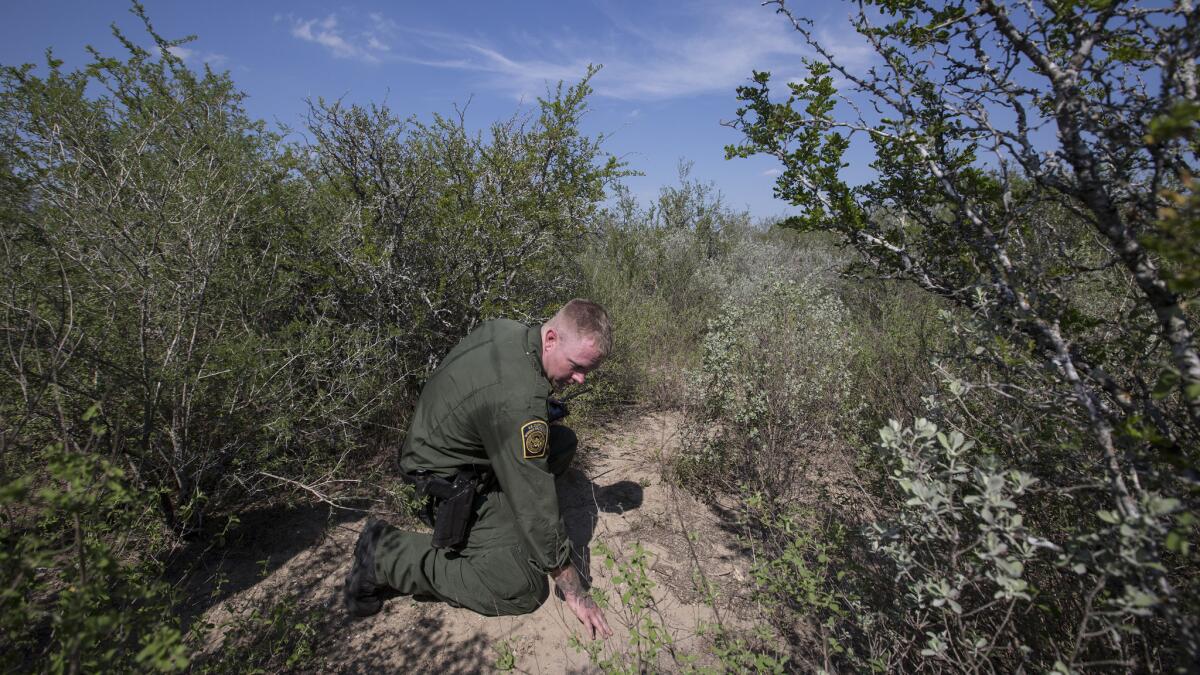
Within Central America, news spread quickly of Trump’s plans to build a border wall and deport immigrants already living illegally in the United States, Correa-Cabrera said. Many are now calculating whether it’s worth paying smugglers as much as $7,000 to $11,000 to lead them on often-perilous routes north.
Another factor, some analysts add, is that smugglers took advantage of the political climate in the United States toward the end of last year, encouraging more people to cross the border before Trump took office.
“Their sales pitch to people in Central America was: ‘If you want to get into the U.S., you better come now, before the wall is built, and before the U.S. starts massively ramping up deportations,’” said Eric L. Olson, associate director of the Latin American Program at the Woodrow Wilson International Center for Scholars in Washington D.C. “Now that’s died off some.”
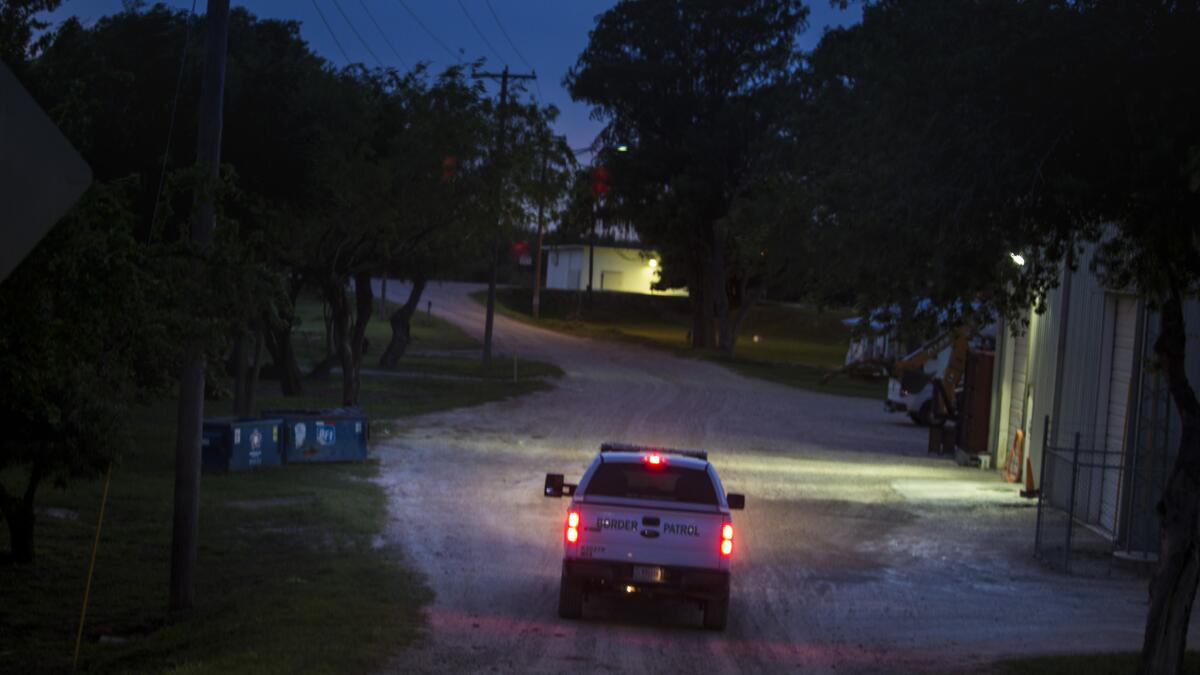
While the number of people crossing the border is significantly down — and not just a seasonal fluctuation – many migration experts agree it is too early to detect a long-term pattern.
“People may just be biding their time and putting off a journey for a few months,” said Faye Hipsman, a policy analyst at the Migration Policy Institute. Long-term, the number of immigrants caught crossing the border had already plunged from a peak of about 1.6 million in 2000 to 415,000 in 2016.
Yet within that time, there have been constant ebbs and flows: In 2015, numbers dropped when Mexico stepped up enforcement and the U.S. warned people in Central America that they would not be allowed to stay in the U.S. Yet the numbers eventually climbed back up in 2016.
“This is a wait-and-see period for everyone – children, families, more traditional migrants, smugglers,” Hipsman said. “If policies don’t change and if nothing changes in people’s lives, the numbers will likely will go up again.”
More than 3,000 Border Patrol agents already monitor the Rio Grande Valley sector’s 315-mile border, and concrete levy walls and metal fences cut through some of the most highly populated areas. There is also a virtual wall – a string of radar blimps, cameras and ground sensors positioned at hot spots to detect people moving across the land.
Yet Manuel Padilla, chief of the Border Patrol’s Rio Grande Valley sector, would like to see Texas’s southernmost tip benefit from the massive spending that transformed California, Arizona and New Mexico.
“We need the wall – or wall-and-fence combination, whatever that ends up looking like – in order to stop the people from coming over,” he said. “People will say ‘Well, it doesn’t stop people.’ But it slows it down in order for us to be able to respond.”
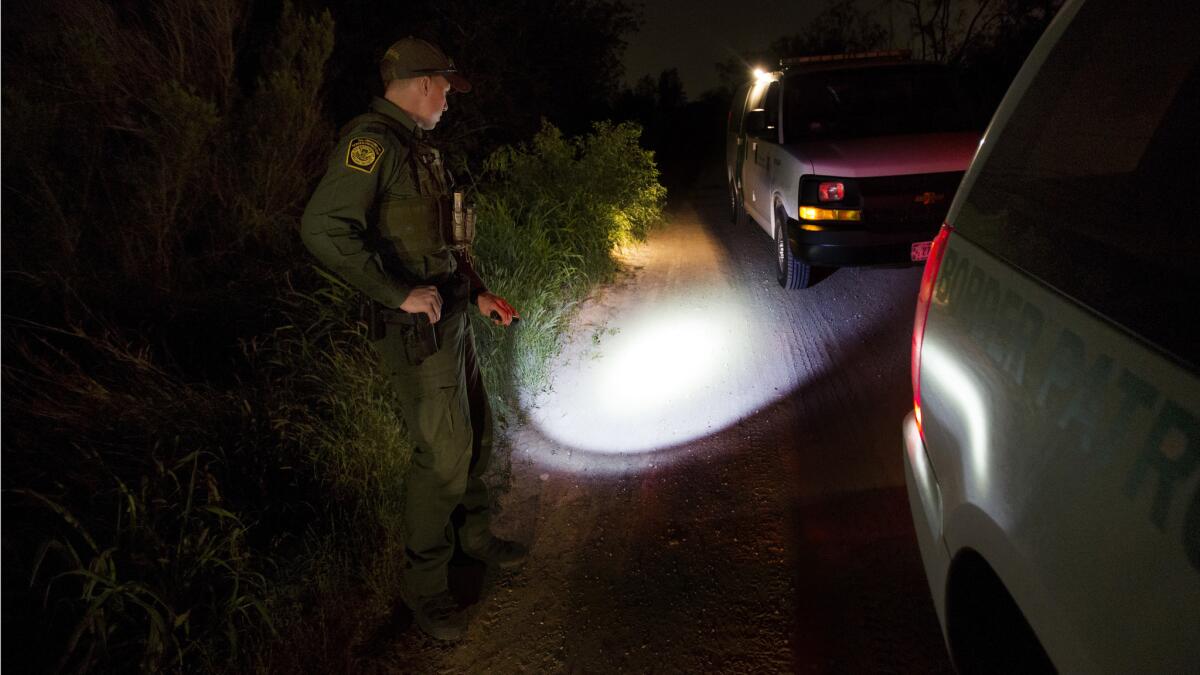
In McAllen, Texas, just north of Hidalgo, Sister Norma Pimentel, executive director of Catholic Charities of the Rio Grande Valley, has watched the number of immigrants passing through her shelter at Sacred Heart Church drop from about 150 a day to 50 a week.
Contemplating her almost vacant shelter, piled high with neat stacks of toothpaste, T-shirts, tennis shoes, baby bottles and diapers, Pimentel worries about families facing violence in Honduras, Guatemala and El Salvador: Are they staying home in Central America? Are they stuck in Mexico? Are they taking more remote routes and exposing themselves to more danger?
“People are afraid,” she said. “Mothers are living in fear of gangs and they fear for the lives of their children. That hasn’t changed. Not having that certainty of having a safer place to go to just puts everything on hold for them.”
Still, a small trickle of migrants continues to make the crossing.
As Castro scoured the flat brushland near the Rio Grande in Hidalgo, her headlights eventually settled on a woman and a young girl and boy a few yards ahead. Wide-eyed, they walked toward her patrol vehicle.
Castro hit the brakes and climbed down from her white-and-green Chevy Tahoe. “De donde es, señora?” she asked, handing over a bottle of water.
Rubbing her belly, Bacssy Garcia Oseguera, 27, a petite woman with golden-brown hair swept up in a ponytail, told Castro she’s three months pregnant. She and her 6-year-old daughter, Joyce, traveled 1,500 miles from San Lorenzo, Honduras, to escape her abusive husband and gangs and seek asylum in the United States.

Rio Grande Valley border crossing (Brian van der Brug / Los Angleles)
The boy was no relation, she said. They bumped into him after they crossed the river.
As Castro fired off questions, Darwin, 11, stood with his brow furrowed and his legs a little apart, as if trying to mentally summon the strength of the hulking anime robot emblazoned on his T-shirt.
Reaching into his stonewashed jeans to pull out a folded-up copy of his birth certificate, he told Castro he’s trying to join his father in New York. Oseguera also handed over her ID card and three copies of Joyce’s birth certificate, saying she hoped to join her cousin in Houston.
“How much did you pay to get here?” Castro asked.
Oseguera shook her head, indicating she didn’t pay anyone.
“Señora,” Castro said sternly, raising her voice. “Por favor!”
Again, Oseguera insisted she didn’t pay anyone, exasperating Castro. “Por favor!” Castro repeated, glaring. “You cannot cross from Mexico without one of the cartels. Nothing is free.”
Oseguera started to cry. Her stomach hurt, she said, and she’d been walking in the darkness for more than an hour. “Just let me call my cousin and l’ll get to work,” she pleaded.
Eventually, all three were patted down and asked to remove their shoelaces. Then they stepped up into a white transport van to be whisked off to a processing center a few miles north in McAllen.
With a sigh, Castro stepped up in to her Chevy and weaved back along the rutted road, passing no one but other Border Patrol agents.
To read the article in Spanish, click here
ALSO
Gorsuch’s impact on divided Supreme Court will begin immediately
Portland’s longtime homeless camp is moving, but underlying problems persist
In a consequential week, Trump leans on the Washington establishment he vowed to disrupt
More to Read
Sign up for Essential California
The most important California stories and recommendations in your inbox every morning.
You may occasionally receive promotional content from the Los Angeles Times.














